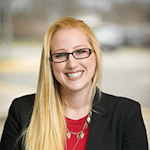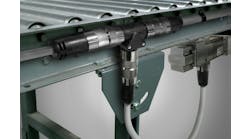Austin Park is machine learning engineer at Gridmatic and the winner of the first-ever Acopian Power Supply Scholarship.
The strain on workforces has never been more apparent than after the COVID-19 pandemic. As experienced workforce members start their well-deserved retirements, it's more crucial than ever for the new generation to be encouraged to fill these open positions. To further encourage STEM education and careers, Acopian Power Supply has recently awarded Yoelis Brito of Newark, New Jersey, with its Annual Power Supply Engineering Scholarship.
The scholarship was established in 2017 to help engineering students pursue careers in power electronics or related engineering disciplines. The scholarship was presented to Austin Park as the first recipient, who explains where his education has led him and how the Acopian Scholarship helped him to reach his goals.
You were the first to be awarded the Acopian Scholarship. Can you update us on where you are now?
Austin Park, machine learning engineer, Gridmatic: Currently I work for a startup called Gridmatic. We are an AI-driven startup that works on modeling uncertainty in electricity systems, and that of course can mean many, many different things. But what we do is we use machine-learning models to model and quantify the uncertainty in the load and renewables in various electricity systems in U.S. markets. And then we use that to submit automated bids and participate as virtual electricity market participants.
Primarily, the electricity markets have these operators and they're called independent system operators (ISOs) or regional transmission organizations (RTOs). And there are various large regions in the United States that are covered by different electricity markets. But, for example, in the Midwest, it would be MISO, and, in California, it's CISO and there are many others. That's the clearinghouse for all the bids and offers that exist in this market.
When we act as virtual participants, we interact primarily with them, and they are accepting and balancing bids and offers between all the different market participants. All of the generators, renewable and gas and coal and all of the load that's supplied—all the utilities that are bidding, that need power and don't supply it, all with their own generation stack—those are the primary partners.
We are also developing other lines of business that are related that can use the same technology, which is essentially better forecasting for what's going to happen. We are shrinking the error bars around wind, solar and load in the 24-to-48-hour timeframe so system planners and ISOs can better understand how to balance the grid, and it creates value for any of the market participants.
It could be all of those parties I just described; it could be generators; it could be load; and a really interesting space that's just starting to grow is battery storage. They're a very interesting participant because they have the ability to act as generation or as load, and they have lots of flexibility, so they can take advantage of better forecasts and better understanding of what's going to happen in the short term time horizon.
It's an exciting time to be part of the energy industry at large. The grid is undergoing a massive transformation right now in many different ways. We're moving from centralized generation to more dispersed generation, so from these large coal and gas plants to wind and solar plants, which are still not small but are certainly more distributed. And then there are extremely distributed rooftop solar systems.
We're transitioning from this kind of central control idea, where you have the ISOs or the RTOs that help operate the system. Of course, they're still going to operate the system, but they will get more data streams and more feedback from the different participants, rather than just having it be fully determined by them.
Jumping back to 2017, you planned to use the scholarship for expenses that you were accruing, as you began studies at Stanford University, where you were accepted for a master of science program for energy, resources and engineering. It sounds like you made it to your goal working in the energy industry. Can you tell us about your studies and how that brought you to reaching a position where you're working in the energy industry?
Austin Park, machine learning engineer, Gridmatic: When I received the scholarship, I knew I wanted to work in energy, and that was primarily motivated by an interest to address climate change in a very high-impact way. If you address the emissions associated with energy use in production, then you've addressed 75% to 80% of the climate problem, so that was obviously a big driver for me.
I pursued that immediately because I knew I wanted to go into it. And it led me to study this program that was very technical. It was a lot of math and computer science and fundamentals of renewable energies. Think thermodynamics and a little bit of circuits, all sorts of fun, various fields of engineering that collide in energy.
And, as I started this study, I realized it's great to have some domain knowledge of different pieces of the energy industry, but what I really needed to bring to the table to have a high level of impact was a specific skill set that could be leveraged and scaled well, and it's hard to think of anything that scales better or can be used more effectively than software. And in particular at Stanford, there's a huge focus on software.
Each of my classes was requiring coding in some form or another. And I had never done that much coding before, so I was fairly green in that field. I'd done a little bit in my undergraduate engineering, but the main focus there was on pen-and-paper problem-solving.
When I started to take more coding classes, I had this moment where I had to decide whether this was going to be a necessary part of the degree that I was going to grind through to get to where I wanted to go or I was going to lean into this and pursue it more intensely and volunteer for more classes to really round out my computer-science knowledge. I decided on the latter.
I started to take lots and lots of different computer-science courses with a focus on machine learning and applying more advanced modeling techniques to energy spaces. And that's kind of where I am today.
Acopian is well-known for its power supplies. How do you feel getting that scholarship to help influence your studies as a graduate student and maybe influence your career that has followed?
Austin Park, machine learning engineer, Gridmatic: I remember when I got the scholarship, the first thing I did was I went out and bought a new computer. And so that was obviously fundamental for computer-science education. And it was very, very helpful to have something that had more up-to-date technology than what I'd been using in undergraduate work. The scholarship was very helpful to be able to afford a good quality computer that had enough RAM to take some of the more intense compute workloads that I was throwing at it. So, thank you very much for the scholarship.
And I think maybe more broadly, getting the Acopian Scholarship just underlined that there's a lot of interest and a lot of need for STEM education. And there's a lot of power that can come out of, not to create a pun there, but a lot of power that comes from focusing on STEM in undergraduate and graduate education.
Even if you don't end up going into a technical route, it prepares you to think about the world with a concrete set of steps to problem-solve in a lot of different abstract spaces.
For my specific career, it gave me tools to carry out the education that was explicitly designed to work on those tools, namely the computer. And it also gave me a reinforcement of perspective that STEM is valuable. We need good engineers to solve tough problems.
You were the first to win the Acopian Scholarship, and it's continued on annually. Why do you think other engineering students should reach out to these companies to do the same? And what do you think that the value is for the companies that are lending a hand to these students as they're entering STEM education and hopefully STEM careers?
Austin Park, machine learning engineer, Gridmatic: I would start by saying there's no better investment than in education. I remember seeing studies that suggest that every dollar invested in education, usually from public sources, not private, results in up to $7 of return. And obviously education is really important as we transition more from a goods-based economy to a service-based economy. I guess more specifically for my story, winning the award allowed me to not have to think as hard about whether I was going to need a job during graduate education, in addition to research responsibilities and taking really hard classes.
And so having a one-track mind when I was thinking about my studies was really, really valuable. And as more broad encouragement for people who are thinking of studying engineering, the world faces a tremendous number of problems, and that can be scary and it can also be exciting.
The domain I chose to focus on was climate change, where we have a really, really short timeframe to address a lot of issues. To get on a track for 1.5 degrees of warming by 2100, we have to halve emissions by 2030 relative to 1990. What that means is an intense focus on all of the low-hanging fruit and some of the more difficult problems that is going to require.
It'll take a lot of pieces of the puzzle. It'll take a policy of support. It'll take nonprofit advocacy. But it'll definitely take engineering solutions. And we're still developing a lot of the solutions that we'll need to ultimately get to those kinds of long-term emissions goals. And I'm sure in other domains that there are important challenges and things that the world is crying out for that engineers can help to solve.
Also read: Acopian announces 2017 Power Supply Engineering Scholarship winner
Looking forward, what are some of your short-term and long-term professional goals?
Austin Park, machine learning engineer, Gridmatic: In the short term, I'm still in the stage where I'm very much skill building. I loved my graduate education. It was definitely a grind. It's definitely hard, but I got a lot out of it, and I actually continue to take classes right now in the machine-learning domain because it's really a fast-moving space. I want to become a true expert in the field of machine learning, rather than an entrant or a kind of an early-stage learner.
That's in the short term about building and rounding out my technical skills; and then longer term it's really mission-driven. I would like to have a substantial impact on climate through emissions reductions. And there are very clear scientific goals, very clear sign posts of these targets that we have to hit. And I would love to be a big part of helping us get to those tough emissions-reduction goals.





